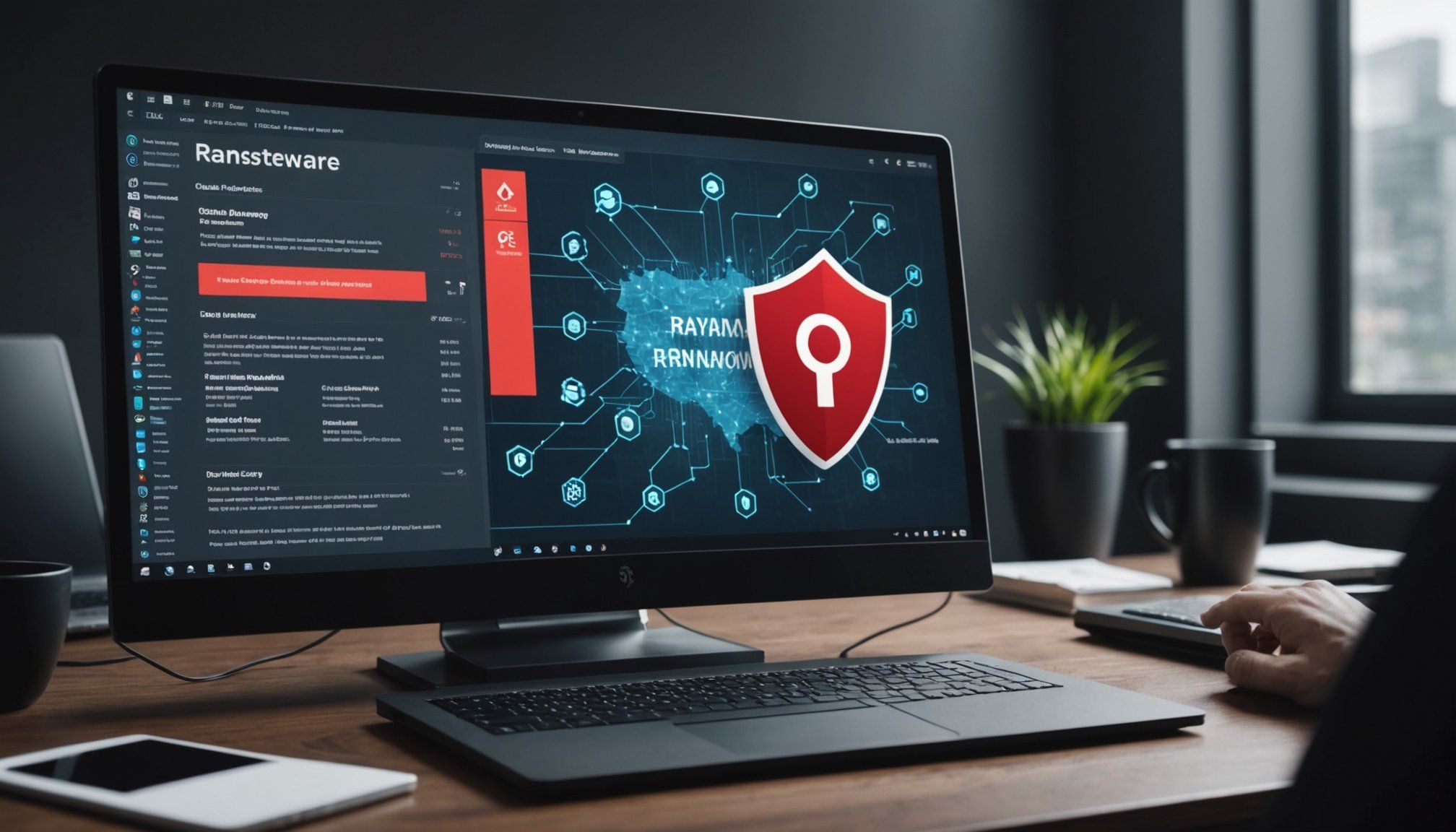In today’s digital age, the threat of ransomware looms large for individuals and businesses alike. Ransomware is a type of malicious software designed to block access to a computer system until a sum of money is paid. With the rise of remote work and increased online activity, the risk of falling victim to such attacks has escalated. It is crucial for you to understand how to safeguard your devices from these potentially devastating threats. In this article, we will explore practical strategies and best practices to protect your devices and maintain your digital security.
Understanding Ransomware and Its Impact
To effectively protect your devices, you must first understand the nature of ransomware and its consequences. Ransomware typically infiltrates your device through phishing emails, malicious downloads, or compromised websites. Once inside, it encrypts your files, rendering them inaccessible until you comply with the attacker’s demands.
Have you seen this : What steps should I follow to set up a secure online payment system?
The impact of a ransomware attack can be severe. For many, losing access to personal data, such as cherished family photos or important documents, can be devastating. For businesses, the stakes are even higher; a successful attack can lead to significant financial losses, operational downtime, and reputational damage. Moreover, paying the ransom does not guarantee that you will regain access to your files. Often, victims report that the attackers either fail to decrypt their data or demand additional payments.
As you familiarize yourself with the risks of ransomware, it becomes clear that prevention is not just preferable but essential. You must adopt a multi-faceted approach to security that includes both technological solutions and safe online practices. With this understanding, you can better appreciate the steps needed to protect your devices.
Have you seen this : What tools can I use to monitor my internet usage and ensure parental controls?
Implementing Robust Security Software
One of the most effective ways to shield your devices from ransomware is through the use of robust security software. Antivirus and anti-malware programs play a critical role in detecting and neutralizing threats before they can cause harm.
When selecting security software, look for features like real-time scanning, automatic updates, and ransomware-specific protection. Real-time scanning continuously monitors your system for suspicious activity, while automatic updates ensure that your software is equipped with the latest virus definitions and security patches.
Additionally, many cybersecurity solutions now offer behavior-based detection, which identifies and blocks ransomware by analyzing the behavior of applications. This approach can be particularly effective against zero-day threats that have not yet been documented. You should also consider using a firewall, which acts as a barrier between your network and potential attackers, providing another layer of protection.
Regularly updating your security software is just as important as having it installed. Cybercriminals constantly develop new tactics, and staying ahead of these threats requires keeping your defenses current. Furthermore, create a habit of running full system scans periodically to identify and remove any lurking malware that may have slipped past your initial defenses. By implementing comprehensive security software, you can significantly reduce your risk of a ransomware attack.
Practicing Safe Browsing Habits
Your online behavior greatly influences your vulnerability to ransomware. By adopting safe browsing habits, you can mitigate the risks associated with internet use. First and foremost, be cautious about the links you click and the websites you visit. Ransomware is often delivered through phishing scams disguised as legitimate emails or misleading advertisements.
When receiving unsolicited emails, do not open attachments or click on links unless you are certain of the sender’s legitimacy. Verify the email address and look for any inconsistencies that may indicate a scam. Additionally, enable spam filters in your email program to reduce the number of potentially harmful messages that reach your inbox.
Another critical practice is to avoid downloading software from unknown sources. Always obtain software from reputable and official websites. When installing new programs, pay attention to the installation process and decline any add-ons or toolbars that are not necessary.
Moreover, it’s wise to use secure connections when browsing. Consider enabling HTTPS in your browser, which ensures that the data exchanged between your device and websites is encrypted. Using a virtual private network (VPN) can also enhance your online privacy and security, particularly when using public Wi-Fi networks. By incorporating these safe browsing habits into your daily routine, you can significantly decrease the likelihood of encountering ransomware.
Regular Backups: Your Safety Net
One of the most effective defenses against ransomware is maintaining regular backups of your data. Backups serve as a safety net, allowing you to recover your important files and documents without having to succumb to ransom demands. To ensure your backups are effective, follow a consistent schedule.
You should consider implementing the 3-2-1 backup strategy: keep three copies of your data, use two different storage types, and store one copy off-site. For example, you can save one copy on an external hard drive, another in the cloud, and keep another copy on your primary device. This redundancy ensures that your data remains safe even if one of the storage options is compromised.
When backing up your data, remember to do so regularly. Depending on how frequently you create or modify important files, you may want to back up your data daily, weekly, or monthly. Automation tools can help simplify this process, ensuring you never forget to back up your files.
Furthermore, periodically test your backups to confirm that you can successfully restore your data if needed. This practice ensures that your backups are functioning correctly and that your recovery process will be smooth in the event of a ransomware attack. By prioritizing regular backups, you arm yourself with a powerful tool to combat the consequences of ransomware.
Educating Yourself and Staying Informed
The landscape of cybersecurity is constantly evolving, making it imperative for you to stay informed about the latest threats and protective measures. One of the best ways to do this is by educating yourself on ransomware trends and attack vectors. Follow reputable cybersecurity blogs, websites, and news outlets to keep abreast of developments in the field.
Additionally, consider participating in online courses or webinars that focus on cybersecurity awareness. Many organizations offer free resources that cover topics such as safe online practices, identifying phishing attempts, and understanding the implications of ransomware. The more knowledgeable you become, the better equipped you will be to recognize potential threats and take proactive measures.
Engaging in discussions with peers and sharing experiences can also foster a culture of awareness. Encourage your friends, family, and colleagues to adopt similar protective practices, as collective vigilance can enhance everyone’s security.
Finally, keep your software and operating systems updated. Cybercriminals often exploit vulnerabilities in outdated software, so regularly installing updates and patches is crucial. By committing to continuous education and remaining vigilant, you will strengthen your defenses against ransomware attacks.
In conclusion, protecting your devices from ransomware requires a proactive approach that encompasses various strategies. By understanding the nature of ransomware, implementing robust security software, practicing safe browsing habits, maintaining regular backups, and continuously educating yourselves, you can significantly reduce the risk of falling victim to these malicious attacks.
Cybersecurity is not solely the responsibility of IT professionals; each of you plays a critical role in maintaining a secure digital environment. As threats evolve, so must your defenses. By taking these steps seriously and integrating them into your daily routines, you can effectively safeguard your devices and data. Remember, the cost of prevention is always less than the cost of recovery. Stay informed, stay vigilant, and protect your digital life.











